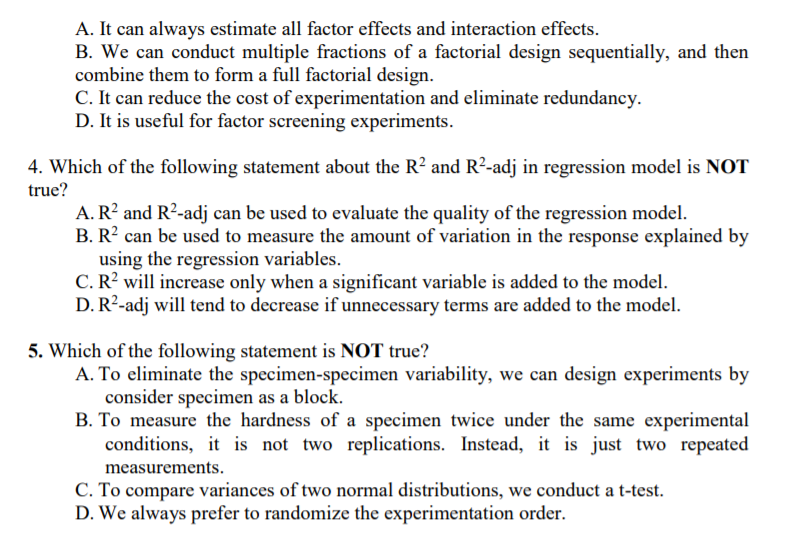A factorial design has to be planned meticulously as an error in one of the levels or in the general operationalization will jeopardize a great amount of work. In a mixed factorial design one variable is altered between subjects and another is altered within subjects.

Factorial Design Variations Video Lesson Transcript Study Com
Both B and C.

. The main disadvantage is the difficulty of experimenting with more than two factors or many levels. Each variable being manipulated is called a factor. In a factorial design the main effects are A the effects of the most important independent variables on your dependent variable.
A the corresponding complete factorial design is 2 3 in other words involves 3 factors each of which has 2 levels for a total of 8 experimental conditions. Level of a single independent variable. You already know that you can have more than one IV.
A factorial design always has more than one A. And c this fractional factorial design is a 2 1 12 fraction of the complete factorial. Factorial design involves having more than one independent variable or factor in a study.
For example with three factors the factorial design requires only 8 runs in the form of a cube versus 16 for an OFAT experiment with equivalent power. While a between-subjects design has fewer threats to internal validity it also requires more participants for high statistical power than a within-subjects design. 21 the first dimension is the variable that is assumed to affect the speed of processing of process.
Always achieves greater statistical power. Always requires more subjects. 21 displays a two-factorial design in which each factor is represented by a single dimension.
Another term you should be familiar with pertains to the number of levels involved in factorial designs. Other than these slight detractions a factorial design is a mainstay of many scientific disciplines delivering great. The first is the factorial nature where there are two or more independent variables and each has two or more levels Stangor 2011.
The number of digits tells you how many in independent variables IVs there are in an experiment while the value of each number tells you how many levels there are for each independent variable. F More Than One Independent Variable The principal difference between a factorial experiment and a two-group experiment is that a factorial design a. A factorial design is obtained by cross-combining of all the factors values.
The factors form a Cartesian coordinate system ie all combinations of each level of each dimension. The repeated-measures factorial design is a quantitative method for exploring the way multiple variables interact on a single variable for the same person Field 2009. What are the pros and cons of a between-subjects design.
In this type of study there are two factors or independent variables and each factor has two levels. B the fractional factorial design involves 2 31 2 2 4 experimental conditions. More than one at a time Originally for true experiments but also useful with observational data If there are observations at all combinations of explanatory variable values its called a complete factorial design as opposed to a fractional factorial.
6 runs versus only 4 for the two-level design. The advantage of factorial design becomes more pronounced as you add more factors. Factorial designs allow researchers to look at.
When you have more than one IV they can all be between-subjects variables they can all be within-subject repeated measures or they can be a mix. This type of design is called a factorial design because more than one variable is being manipulated. This notation contains the following information.
In both designs shown at the bottom. Say one between-subject variable and one within-subject variable. And you know that research designs can be between-subjects or within-subjects repeated-measures.
One common type of experiment is known as a 22 factorial design. You can manipulate a lot of variables at once.

8 2 Multiple Independent Variables Research Methods In Psychology

Psyc203 Chapter 8 Experimental Design Ii Factorial Designs Flashcards Quizlet

Factorial Design Variations Research Methods Knowledge Base

Solved Multiple Choices Each Question May Have More Than Chegg Com

Factorial Designs Research Methods Knowledge Base

Chapter 10 More On Factorial Designs Answering Questions With Data
Multiple Independent Variables Research Methods In Psychology 2nd Canadian Edition

0 comments
Post a Comment